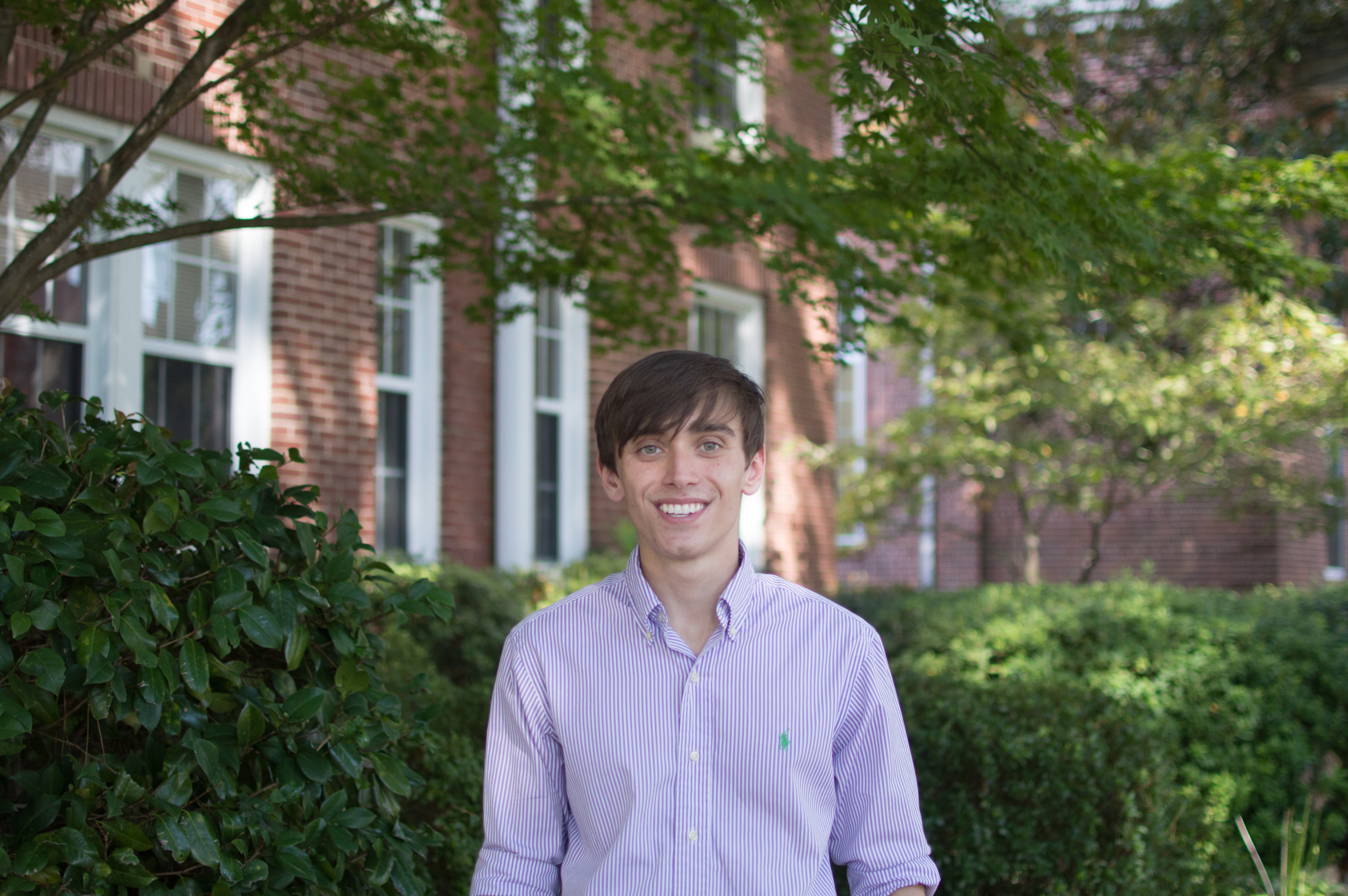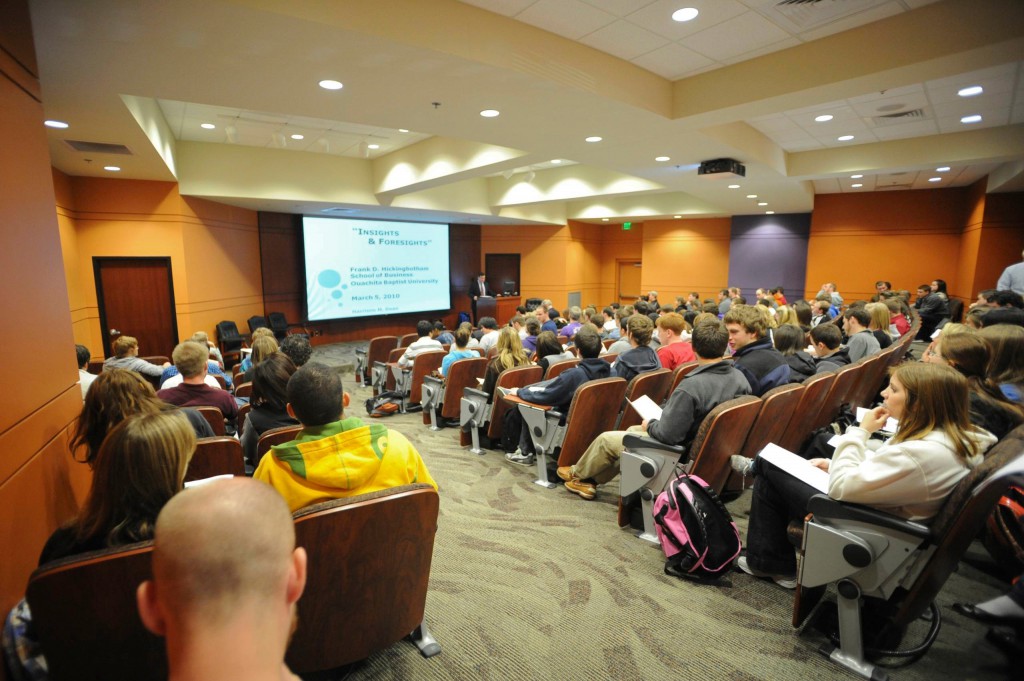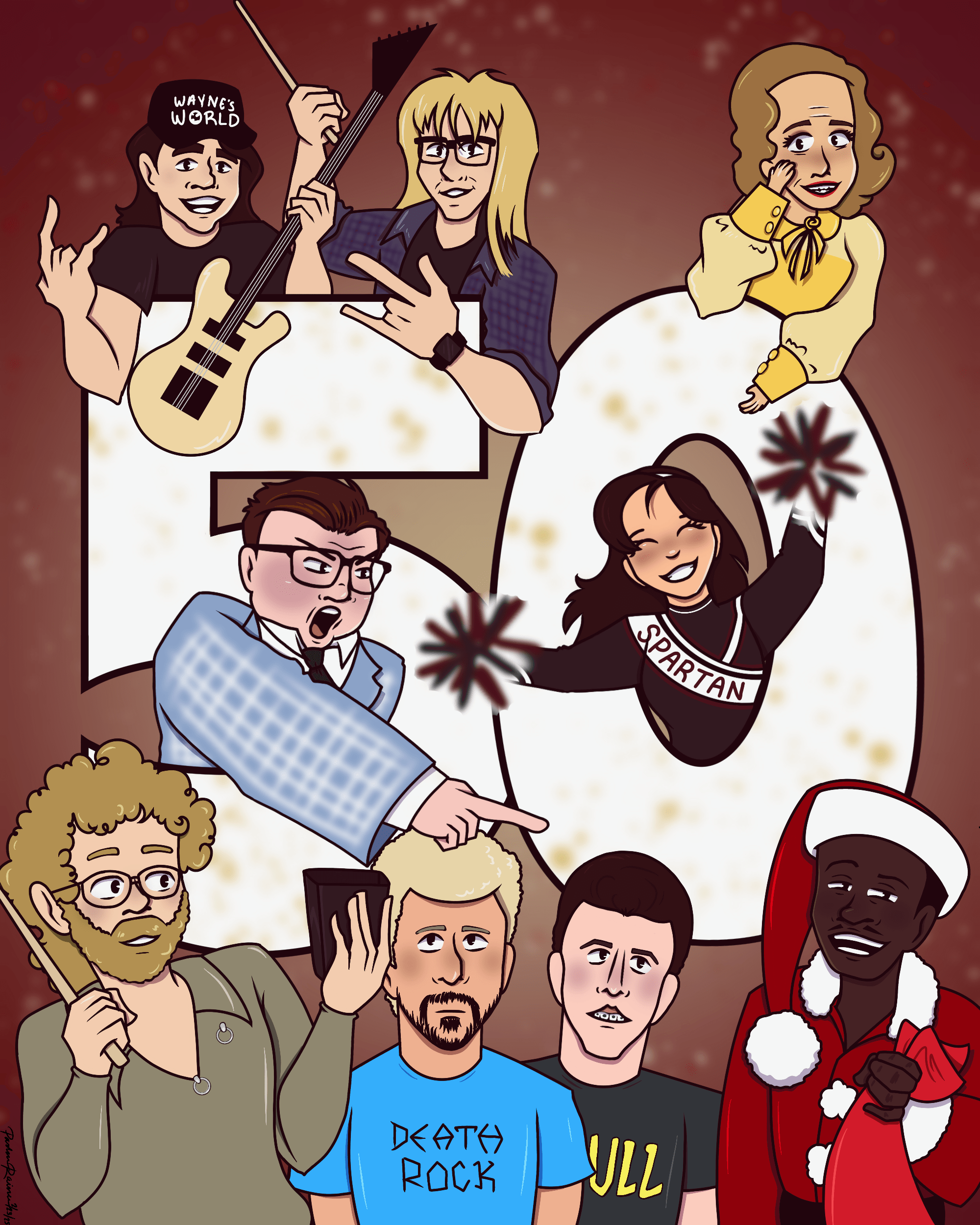A young, brown-haired boy rides his bike down a moonlit street. Suddenly, the headlight on his bike goes out. After glancing down at the light, he looks back up to see a monstrous figure standing in the middle of the road, causing him to veer off into a ditch. He sprints away from his crashed bike into the woods. Whatever he saw, it wasn’t human. And it was pursuing him.
With haste, the boy darts through the front door of his house, out the back and into a tiny shed in his backyard.
Silence.
Hands trembling, the boy grabs his family rifle and loads it.
The shed door creaks.
His breathing quickens. He aims the rifle at the door.
A low growl emits from the darkness as a shadow slowly rises behind the boy. He locks eyes with the hidden creature, allowing terror to consume him.
Tension builds with the score; the fizzling of the shed’s lone light bulb grows louder and louder as the camera zooms in on it…
Silence. A wide shot of an empty shed. The light bulb lingers as the scene gradually fades to black.
On July 15, 2016, my parents and I sat down to watch the pilot for a Netflix original series called “Stranger Things.” From the opening sequence described above, we knew we were in for something special.
The story revolves around the mysterious disappearance of 11-year-old Will Byers and the odd rippling effect it has on the residents and atmosphere of 1983 Hawkins, Indiana. Will’s mother, Joyce – a single mom already struggling with her own issues – becomes frantic and distressed in her son’s absence.
At first, the town seems unconcerned. “Will probably just ran away,” or, “maybe he’s hiding?” Disappearances like this were rare at the time, as local police chief Jim Hopper is quick to point out. He says, “You want to know the worst thing that’s happened here in the four years I’ve worked here? The worst thing? It was when an owl attacked Eleanor Gillespie because it thought her hair was a nest.”
As the investigation deepens, however, another person goes missing. A secret government facility is discovered in the woods of Hawkins, and a young girl named Eleven is revealed to have the power of telekinesis.
My biggest fear for this show after seeing the trailer was that it would live up to its name, that its sci-fi and fantasy elements would overpower any sort of depth and realism present. While there are plenty of bizarre moments and far-fetched concepts in “Stranger Things,” they exist only to compliment the characters that keep us grounded in reality.
The three main characters are 11-year-old friends of Will’s named Mike, Dustin and Lucas, and Finn Wolfhard, Gaten Matarazzo and Caleb McLaughlin do an excellent job at bringing them to life. They play “Dungeons and Dragons” in their parents’ basements. They laugh. They curse. They fight. It all feels genuine, and when Will goes missing, they band together and risk their lives to find him.
Winona Ryder and David Harbour shine as Joyce Byers and Chief Hopper, respectively. Ryder conveys well the desperation any mother would feel after the disappearance of her son, as well as the raw determination to find him and bring him home. The character arc of Hopper from complacent drunk to fearless leader is also incredibly satisfying to watch.
Amongst all of the great performances, however, the standout is easily Millie Bobby Brown as Eleven. Her character is shrouded in mystery and secrecy. She has a dark and troubled past, and her superhuman abilities serve as a gift and a curse throughout the story.
Eleven’s dialogue is limited, meaning that most of her character had to be communicated through facial expressions, mannerisms and inner dialogue, and 12-year-old Brown accomplishes this masterfully.
“Stranger Things” takes us back to the world of the 1980s, a world of Realistic-branded walkie talkies, Levi’s corduroy jackets and wood-paneled station wagons. It was a time when kids could ride their bikes home at night without the fear of being kidnapped; when privacy on a phone call was dependent on the length of your rotary telephone chord.
Its soundtrack is infused with 80s classics. In one scene, Will and his brother, Jonathan (Charlie Heaton), bond over “Should I Stay or Should I Go” by The Clash. In another, romance blossoms to the sounds of Toto’s “Africa.”
Above all, “Stranger Things” is a love letter to 80s film. The tune of the opening credits is set to 80s-style synthesizers, which were commonly used in B-level horror movies at the time. Long hikes along railroad tracks evoke images of 1986’s “Stand By Me.” And as the children and Eleven fled the evil government scientists on their bikes, I’m sure that somewhere Steven Spielberg shed tears of joy on E.T.’s behalf.
The Duffer Brothers have utilized the power of Netflix to create something unique. “Stranger Things” provides loads of 80s nostalgia for adults, while also reintroducing us millennials to the staples of that era. It is horrifying and uplifting; darkly humorous; unrealistic, yet somehow grounded in reality.
With season two on the horizon and with presumably many stories left to tell, “Stranger Things” has only scratched the surface of its potential. Hopefully in the not-so-distant future, we will be able to look back on “Stranger Things” as a classic, a “Goonies” for our generation to pass onto the next. After all, stranger things have happened.
By Evan Wheatley, Features Editor








